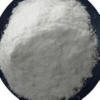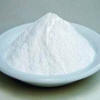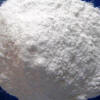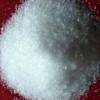Search for the supplies that you need here:
DMF Support and Documentations Available | |
 WHO-GMP Certified Good Manufacturing Practice Certified by World Health Organization |  WC, Written Confirmation for Active Substance to be imported into European Union (EU). |
Monopotassium Dipotassium Tripotassium Phosphate or Potassium Phosphate Monobasic Dibasic Tribasic BP USP IP Analytical Reagent FCC Food Grade Manufacturers
Anmol Chemicals is a manufacturer supplier exporter of Monopotassium Dipotassium Tripotassium Phosphate or Potassium Phosphate Monobasic Dibasic Tribasic and it offers materials as per IP BP EP Ph Eur USP NF JP FCC Food Grade as per the the latest monograph at best prices. Anmol Chemicals Group, established in 1976, is the pioneer manufacturer of Specialty Chemicals, Pharmaceutical Excipients, Some API, Food Chemicals in India. Anmol Chemicals Group has manufacturing facilities spread across Western India, representatives in Houston, Chicago USA and Dubai, UAE. We also have toll manufacturing units for processing chemicals in a few countries around the world. We make IP, BP, EP, USP, NF, Ph. Eur., JP, FCC or Food Grade, Analytical Reagent Grade, LR or Laboratory Reagent Grades and Pure Grades of various chemicals. All our items are analyzed to meet the required standards. We can supply the product in grams for your laboratory trial and in tons for your plant scale jobs.
We manufacture Bulk Drugs / API, Excipients, Pharmaceuticals (IP BP USP NF Ph Eur EP JP), Specialty Chemicals (Pure/Reagent), Mineral Fortifiers (FCC). Our manufacturing facility is FDA approved and GLP, cGMP, ISO9001, ISO14001, ISO/IEC 17025, ISO22000, FSSC 22000, ISO45001, FSSAI, Kosher, HALAL, COPP, WHO-GMP certified and Written Confirmation (WC) is available. Solid materials can be customized for particle size, shape, and bulk density. We observe WHO Good Manufacturing Practices and Good Laboratory Practices. We are a government-recognized STAR Export House and "Authorised Economic Operator (AEO)" per Indian Customs.
All technical documents and DMF support available.
Monopotassium Phosphate Monobasic Potassium Phosphate Monobasic SDS of Manufacturers
Dipotassium Phosphate Dibasic Potassium Phosphate Dibasic SDS of Manufacturers
Tripotassium Phosphate Tribasic Potassium Phosphate Tribasic SDS of Manufacturers
Potassium Phosphate is offered in two grades namely Commercial Pure Grade and Extra Pure BP IP USP FCC Analytical Reagent Grade.
Genearl Specifications of Monobasic Potassium Phosphate Monobasic Monopotassium PhosphateMonopotassium Phosphate Specifications
| Appearance | Fine White Crystals |
| Purity | 98% minimum |
| P2O5 Content | 51.5% minimum |
| Chloride | 0.15% maximum |
| Heavy Metals | 20 ppm maximum |
| Arsenic | 3 ppm maximum |
| Moisture | 3% maximum |
| Insoluble | 0.1% maximum |
Potassium Dihydrogen Phosphate BP Ph Eur Grade Specificatiosn
Monopotassium Phosphate BP
Potassium Phosphate Monobasic BP
KH2PO4 -- 136.1 -- CAS 7778-77-0
Monobasic Potassium Phosphate BP
Potassium Phosphate Monobasic BP
DEFINITION
Potassium dihydrogen phosphate contains not less than 98.0 per cent and not more than the equivalent of 100.5 per cent of KH2PO4, calculated with reference to the dried substance.
CHARACTERS
A white, crystalline powder or colourless crystals, freely soluble in water, practically insoluble in alcohol.
IDENTIFICATION
A. Solution S (see Tests) is faintly acid.
B. Solution S gives reaction (b) of phosphates.
C. 0.5 ml of solution S gives reaction of potassium.
TESTS
Solution S: Dissolve 10.0 g in carbon dioxide-free water prepared from distilled water and dilute to 100 ml with the same solvent.
Appearance of solution: Solution S is clear and colourless.
pH: To 5 ml of solution S add 5 ml of carbon dioxide-free water. The pH of the solution is 4.2 to 4.5.
Reducing substances: To 5 ml of solution S add 5 ml of dilute sulphuric acid and 0.25 ml of 0.02 M potassium permanganate. Heat on a water-bath for 5 min. The colour of the permanganate is not completely discharged.
Chlorides: Dilute 2.5 ml of solution S to 15 ml with water R. The solution complies with the limit test for chlorides (200 ppm).
Sulphates: To 5 ml of solution S add 0.5 ml of hydrochloric acid and dilute to 15 ml with distilled water. The solution complies with the limit test for sulphates (300 ppm).
Arsenic: 0.5 g complies with limit test A for arsenic (2 ppm).
Iron: 10 ml of solution S complies with the limit test for iron (10 ppm).
Sodium: If intended for use in the manufacture of parenteral dosage forms, it complies with the test for sodium. Not more than 0.1 per cent of Na, determined by atomic emission spectrometry
Heavy metals: 12 ml of solution S complies with limit test A for heavy metals (10 ppm).
Loss on drying: Not more than 2.0 per cent, determined on 1.000 g by drying in an oven at 125C to 130C.
Potassium Phosphate Monobasic FCC Food Grade Specifications
Potassium Biphosphate; Potassium Dihydrogen Phosphate
Monopotassium Phosphate FCC
Monobasic Potassium Phosphate FCC
KH2PO4 Formula weight 136.09
INS: 340(i) CAS 7778-77-0
DESCRIPTION
Potassium Phosphate, Monobasic, occurs as colorless crystals or as a white, granular or crystalline powder. It is stable in air. It is freely soluble in water, but is insoluble in alcohol. The pH of a 1:100 aqueous solution is between 4.2 and 4.7.
Function: Buffer; sequestrant; yeast food.
REQUIREMENTS
Identification: A 1:20 aqueous solution gives positive tests for Potassium and for Phosphate.
Assay: Not less than 98.0% of KH2PO4 after drying.
Arsenic: Not more than 3 mg/kg.
Fluoride: Not more than 10 mg/kg.
Insoluble Substances: Not more than 0.2%.
Lead: Not more than 2 mg/kg.
Loss on Drying: Not more than 1%.
Potassium Phosphate Monobasic Analytical Reagent Grade Specifications
Potassium Dihydrogen Phosphate
Monopotassium Phosphate
Monobasic Potassium Phosphate
KH2PO4
Formula Weight 136.09
CAS Number 7778-77-0
REQUIREMENTS
Assay: 99.0% KH2PO4
pH of a 5% solution: 4.1-4.5 at 25C
MAXIMUM ALLOWABLE
Insoluble matter: 0.01%
Loss on drying at 105C: 0.2%
Chloride (Cl): 0.001%
Nitrogen compounds (as N): 0.001%
Sulfate (SO4): 0.003%
Heavy metals (as Pb): 0.001%
Iron (Fe): 0.002%
Sodium (Na): 0.005%
Please visit Monopotassium phosphate or Monobasic potassium phosphate monobasic IP BP USP FCC for specification.
Mono potassium phosphate MKP (also potassium dihydrogen phosphate, KDP, or monobasic potassium phosphate, MKP or potassium phosphate monobasic) -- KH2PO4 -- is a soluble salt which is used as a fertilizer, a food additive and a fungicide. Mono potassium phosphate is a source of phosphorus and potassium. Mono potassium phosphate is also a buffering agent. When used in fertilizer mixtures with urea and ammonium phosphates, Mono potassium phosphate minimizes escape of ammonia by keeping the pH at a relatively low level.
Potassium Phosphate - Monobasic: Potassium biphosphate or acid phosphate; potassium dihydrogen phosphate; mono potassium phosphate. KH2PO4; mol. wt. 136.09. Colorless crystals or white, granular powder; permanent in air; at 400° loses H2O, forming metaphosphate. d. 2.34. Soluble in about 4.5 parts water; insoluble in alcohol. pH: 4.4-4.7.
Use: In buffers for determination of pH.
MKP is used to prevent calcium kidney stones. It is also used to decrease the amount of ammonia in urine, thereby reducing odor and skin irritation caused by high-ammonia urine. This medication is also given to help certain antibiotics for bladder infectionswork better.
Fertilizer grade MKP contains the equivalent of 52% P2O5 and 34% K2O, and is labeled 0-52-34. MKP is often used as a nutrient source in the greenhouse trade and in hydroponics.
MKP is one of the components of Gatorade and is used as an additive in cigarettes.
At 400°C it decomposes, by loss of water, to potassium metaphosphate (KPO3)
As a crystal, MKP is noted for its non-linear optical properties. Used in optical modulators and for non-linear optics such as SHG (second harmonic generation).
Also to be noted is KDP, Potassium Dideuterium Phosphate, with slightly different properties. Highly deuterated KDP is used in nonlinear frequency conversion of laser light instead of protonated (regular) KDP due to the fact that the replacement of protons with deuterons in the crystal shifts the third overtone of the strong OH molecular stretch to longer wavelengths, moving it mostly out of the range of the fundamental line at ~1,064nm of neodymium based lasers. Regular KDP has absorbance at this wavelength of around 4.7-6.3%/cm of thickness while highly deuterated KDP has absorbance's of typically less than .8%/cm.
General Specifications of Dibasic Potassium Phosphate Dibasic Disodium Phosphate
Dipotassium Phosphate Specifications:
| Appearance | Fine White Crystals |
| Purity | 96% minimum |
| pH 1% | 8.7 - 9.3 |
| Sulphate | 0.02% maximum |
| Heavy Metals | 10 ppm maximum |
| Arsenic | 4 ppm maximum |
| Moisture | 5% maximum |
| Insoluble | 0.1% maximum |
Dipotassium Hydrogen Phosphate BP Ph Eur Grade Specifications
Dipotassium Phosphate BP
K2HPO4 -- 174.2 -- CAS 7758-11-4
Dibasic Potassium Phosphate BP
Potassium Phosphate Dibasic BP
DEFINITION
Dipotassium phosphate contains not less than 98.0 per cent and not more than the equivalent of 101.0 per cent of K2HPO4, calculated with reference to the dried substance.
CHARACTERS
A white powder or colourless crystals, very hygroscopic, very soluble in water, very slightly soluble in alcohol.
IDENTIFICATION
A. Solution S (see Tests) is slightly alkaline
B. Solution S gives reaction of phosphates.
C. Solution S gives reaction of potassium.
TESTS
Solution S: Dissolve 5.0 g in distilled water and dilute to 50 ml with the same solvent.
Appearance of solution: Solution S is clear and colourless.
Reducing substances: Heat on a water-bath for 5 min a mixture of 5 ml of solution S, 5 ml of dilute sulphuric acid and 0.25 ml of 0.02 M potassium permanganate. The solution remains faintly pink.
Chlorides: To 2.5 ml of solution S add 10 ml of dilute nitric acid and dilute to 15 ml with water. The solution complies with the limit test for chlorides (200 ppm).
Sulphates: To 1.5 ml of solution S add 2 ml of dilute hydrochloric acid and dilute to 15 ml with distilled water. The solution complies with the limit test for sulphates (0.1 per cent).
Arsenic: 5 ml of solution S complies with limit test A for arsenic (2 ppm).
Iron: 10 ml of solution S complies with the limit test for iron (10 ppm).
Heavy metals: Dissolve 2.0 g in 8 ml of water. Acidify with about 6 ml of dilute hydrochloric acid (pH 3 to 4) and dilute to 20 ml with water. 12 ml of the solution complies with limit test A for heavy metals (10 ppm).
Sodium: If intended for use in the manufacture of parenteral dosage forms, it contains not more than 0.1 per cent of Na, determined by atomic emission spectrometry.
Loss on drying: Not more than 2.0 per cent, determined on 1.000 g by drying in an oven at 125C to 130C.
Bacterial endotoxins: Less than 1.1 IU/mg, if intended for use in the manufacture of parenteral dosage forms without a further appropriate procedure for the removal of bacterial endotoxins.
Dibasic Potassium Phosphate USP Grade Specifications
Dipotassium Phosphate USP
Dibasic Potassium Phosphate USP
Potassium Phosphate Dibasic USP
K2HPO4 174.18
Phosphoric acid, dipotassium salt.
Dipotassium hydrogen phosphate CAS 7758-11-4
Dibasic Potassium Phosphate contains not less than 98.0 percent and not more than 100.5 percent of K2HPO4, calculated on the dried basis.
Identification: A solution (1 in 20) responds to the tests for Potassium and for Phosphate.
pH: between 8.5 and 9.6, in a solution (1 in 20).
Loss on drying: Dry it at 105 to constant weight: it loses not more than 1.0% of its weight.
Insoluble substances: Dissolve 10 g in 100 mL of hot water, filter through a tarred filtering crucible, wash the insoluble residue with hot water, and dry at 105C for 2 hours: the weight of the residue so obtained does not exceed 20 mg (0.2%).
Carbonate: To 1 g add 3 mL of water and 2 mL of 3 N hydrochloric acid: not more than a few bubbles are evolved.
Chloride: A 1.0-g portion shows no more chloride than corresponds to 0.40 mL of 0.020 N hydrochloric acid (0.03%).
Sulfate: A 0.20-g portion shows no more sulfate than corresponds to 0.20 mL of 0.020 N sulfuric acid (0.1%).
Arsenic: 3 ppm.
Iron: the limit is 0.003%.
Sodium: A solution (1 in 10) tested on a platinum wire imparts no pronounced yellow color to a non-luminous flame.
Heavy metals: the limit is 0.001%.
Limit of fluoride: The limit is 0.001%.
Limit of monobasic or tribasic salt: Dissolve 3 g in 30 mL of water, cool to 20C, and add 3 drops of thymol blue: a blue color is produced, which is changed to yellow (with a greenish tinge) by the addition of not more than 0.4 mL of 1 N hydrochloric acid.
Potassium Phosphate Dibasic FCC Food Grade Specifications
Dipotassium Monophosphate, Dipotassium Phosphate FCC Food Grade
Dibasic Potassium Phosphate FCC
K2HPO4 Formula weight 174.18
INS: 340(ii) CAS 7758-11-4
DESCRIPTION
Potassium Phosphate, Dibasic, occurs as a colorless or white, granular salt that is deliquescent when exposed to moist air. One gram is soluble in about 3 mL of water. It is insoluble in alcohol. The pH of a 1% solution is about 9.
Function: Buffer; sequestrant; yeast food.
REQUIREMENTS
Identification: A 1:20 aqueous solution gives positive tests for Potassium and for Phosphate.
Assay: Not less than 98.0% of K2HPO4 after drying.
Arsenic: Not more than 3 mg/kg.
Fluoride: Not more than 10 mg/kg.
Insoluble Substances: Not more than 0.2%.
Lead: Not more than 2 mg/kg.
Loss on Drying: Not more than 2.0%.
Potassium Phosphate Dibasic Analytical Reagent Grade Specifications
Dibasic Potassium Phosphate
Dipotassium Phosphate
Dipotassium Hydrogen Phosphate
K2HPO4
Formula Weight 174.18
CAS Number 7758-11-4
REQUIREMENTS
Assay: 98.0% K2HPO4
pH of a 5% solution: 8.5-9.6 at 25C
MAXIMUM ALLOWABLE
Insoluble matter: 0.01%
Loss on drying at 105C: 1.0%
Chloride (Cl): 0.003%
Nitrogen compounds (as N): 0.001%
Sulfate (SO4): 0.005%
Heavy metals (as Pb): 5 ppm
Iron (Fe): 0.001%
Sodium (Na): 0.05%.
Potassium Phosphate, Tribasic FCC Food Grade Specifications
Tripotassium Phosphate FCC Food Grade
Tribasic Potassium Phosphate FCC
K3PO4 Formula weight 212.27
INS: 340(iii) CAS 7778-53-2
DESCRIPTION
Potassium Phosphate, Tribasic, occurs as white, hygroscopic crystals or granules. It is anhydrous or may contain one molecule of water of hydration. It is freely soluble in water, but is insoluble in alcohol. The pH of a 1:100 aqueous solution is about 11.5.
Function: Emulsifier.
REQUIREMENTS
Identification: A 1:20 aqueous solution gives positive tests for Potassium and for Phosphate.
Assay: Not less than 97.0% of K3PO4, calculated on the ignited basis.
Arsenic: Not more than 3 mg/kg.
Fluoride: Not more than 10 mg/kg.
Insoluble Substances: Not more than 0.2%.
Lead: Not more than 2 mg/kg.
Loss on Ignition Anhydrous: Not more than 5.0%; Monohydrate: Between 8.0% and 20.0%.
Please visit Dipotassium phosphate or Dibasic potassium phosphate dibasic IP BP USP FCC for specification.
Di potassium phosphate DKP (K2HPO4) i.e. dipotassium phosphate or potassium phosphate dibasic- also phosphoric acid, di potassium salt; di potassium hydrogen orthophosphate; potassium phosphate dibasic - is a highly water-soluble salt which is often used as a fertilizer, food additive and buffering agent. DKP is a common source of phosphorus and potassium.
Di potassium hydrogen phosphate. K2HPO4; mol. wt 174.18. White, somewhat hygroscopic granules. Very soluble in water, slightly in alcohol. Converted into pyrophosphate by ignition. The aq. solution. is slightly alkaline to PhPh.
As a food additive, DKP is on the FDA's Generally recognized as safe, or GRAS, list of substances. It is used in non-dairy creamers to prevent coagulation. It is sometimes sold as a food additive to help with headaches.
Tribasic Potassium Phosphate Tribasic Tripotassium Phosphate
Tri potassium phosphate TKP TPP i.e. tripotassium phosphate or potassium phosphate tribasic is a water-soluble ionic salt which has the chemical formula K3PO4. It is used as a food additive for its properties as an emulsifier, foaming agent and whipping agent. In combination with fatty acids, it is a potential antimicrobial agent in poultry processing. As a fertilizer, its proportions of N, P2O5, and K2O are 0-33-67, making it one of the few fertilizer compounds in which the nutrient percentages have a total of 100%.
TKP * K3PO4; mol. wt. 212.27. Usually contains about one mol. H2O (9%) and small amount of carbonate. White, deliquesce, granular powder. m. 1340°. Very soluble in water; insoluble in alcohol. The aqueous solution. is strongly alkaline. Keep well closed.
Please visit Tripotassium phosphate or Tribasic potassium phosphate tribasic IP BP USP FCC for specification.
Potassium Metaphosphate USP NF Grade Specifications
Potassium Metaphosphate
KPO3 118.07
Metaphosphoric acid (HPO3), potassium salt.
Potassium metaphosphate CAS 7790-53-6
Potassium Metaphosphate is a straight-chain polyphosphate, having a high degree of polymerization. It contains the equivalent of not less than59.0 percent and not more than 61.0 percent of P2O5.
Identification:
A: Add 1 g of finely powdered Potassium Metaphosphate, slowly and with vigorous stirring, to 100 mL of sodium chloride solution (1 in 50): a gelatinous mass is formed.
B: Boil a mixture of 0.5 g of Potassium Metaphosphate, 10 mL of nitric acid, and 50 mL of water for 30 minutes, and cool: the resulting solution responds to the tests for Potassium and for Phosphate.
Viscosity: Mix 300 mg with 200 mL of sodium pyrophosphate solution (3.5 in 1000), using a magnetic stirrer. Determine the viscosity of the clear solution obtained, or of the liquid phase of the mixture obtained after 30 minutes of continuous stirring: the viscosity is between 6.5 and 15 centipoises.
Lead: not more than 5 ppm of Pb.
Heavy metals: the limit is 0.002%.
Limit of fluoride: To pass the test.
Potassium Polymetaphosphate FCC Food Grade Specifications
Potassium Metaphosphate; Potassium Polyphosphates
Potassium Kurrol’s Salt
(KPO3)n
INS: 452(ii) CAS 7790-53-6
DESCRIPTION
Potassium Polymetaphosphate occurs as a white powder. It is a straight-chain polyphosphate having a high degree of polymerization. It is insoluble in water, but is soluble in dilute solutions of sodium salts.
Function: Emulsifier; moisture-retaining agent.
REQUIREMENTS
Identification:
A. Finely powder about 1 g of sample, and while stirring vigorously, add it slowly to 100 mL of a 1:50 sodium chloride solution. A gelatinous mass forms.
B. Mix 500 mg of sample with 10 mL of nitric acid and 50 mL of water, boil for about 30 min, and cool. The resulting solution gives positive tests for Potassium and for Phosphate.
Assay: Not less than 59.0% and not more than 61.0% of P2O5.
Arsenic: Not more than 3 mg/kg.
Fluoride: Not more than 10 mg/kg.
Lead: Not more than 2 mg/kg.
Viscosity: Between 6.5 and 15 centipoises.
Potassium Pyrophosphate FCC Food Grade Specifications
Tetrapotassium Pyrophosphate
K4P2O7 Formula weight 330.34
INS: 450v CAS 7320-34-5
DESCRIPTION
Potassium Pyrophosphate occurs as colorless or white crystals or as a white, crystalline or granular powder. It is hygroscopic. It is very soluble in water, but is insoluble in alcohol. The pH of a 1:100 aqueous solution is about 10.5.
Function: Emulsifier; texturizer.
REQUIREMENTS
Identification:
A. A 1:20 aqueous solution gives positive tests for Potassium.
B. Dissolve 100 mg of sample in 100 mL of 1.7 N nitric acid. Add 0.5 mL of this solution to 30 mL of quimociac TS. A yellow precipitate does not form. Heat the remaining portion of the sample solution for 10 min at 95C, and add 0.5 mL of it to 30 mL of quimociac TS. A yellow precipitate forms immediately.
Assay: Not less than 95.0% of K4P2O7, calculated on the ignited basis.
Arsenic: Not more than 3 mg/kg.
Fluoride: Not more than 10 mg/kg.
Insoluble Substances: Not more than 0.1%.
Lead: Not more than 2 mg/kg.
Loss on Ignition: Not more than 0.5%.
Keywords: Monopotassium Dipotassium Tripotassium Potassium Phosphate Monobasic, Dibasic & Tribasic IP BP Ph Eur EP USP Analytical Reagent FCC Food Grade CAS Number 7778-77-0 7778-53-2 7790-53-6 7320-34-5 Manufacturer Supplier Exporter Monograph Uses Chemical Molecular Formula Weight.



Manufacturer Supplier Exporter
ANMOL CHEMICALS Private Limited
Representatives in Houston, Chicago and New York, USA
TEL: (OFF) +91 22 23726950, +91 22 23774610, +91 22 23723564
Taloja Navi Mumbai, Banglore, INDIA
e-mail: info@anmol.org
Copyright and Usual Disclaimer is Applicable
Last updated 20-oct-25
Exporters to USA, Canada, UAE, Kuwait, Qatar, Gautemala, Tunisia, Europe, South Africa, Bangladesh, Sri Lanka, Tanzania, Kenya, Egypt, Iraq, Turkey, Israel, Vietnam, Nigeria, Uganda, Brazil, Chile, Argentina, Dubai, UAE, Saudi Arabia, Cameroon, Mexico, Brazil, Chile, Argentina, Korea, Thailand, Malaysia, Indonesia, Jakarta, Australia, China, Germany, France, etc.
Representatives in New York, Houston - Texas, Chicago - Illinois, Los Angeles.
All products are Sold for Industrial and Laboratory Use only.
Fast Selling IP BP Ph Eur EP USP NF JP Analytical Reagent FCC Food Grades of Chemicals by Anmol Chemicals
Ammonium Persulfate --- Acetic Acid Glacial --- Aluminum Chloride --- Ammonium bicarbonate --- Benzyl Alcohol --- Butylated Hydroxyanisole --- Butylated Hydroxytoluene --- Boric Acid --- Calcium Butyrate --- Calcium Chloride --- Calcium Hydroxide --- Calcium Lactobionate --- Calcium Saccharate --- Carbamide Peroxide --- Calcium Oxide --- Calcium Sulfate --- Chromic Chloride --- Fumaric Acid --- Magnesium Butyrate --- Magnesium Chloride --- Magnesium Sulfate --- Malic Acid --- Maleic Acid --- Manganese Chloride --- Manganese Sulfate --- Octyldodecanol --- Oleic acid --- Phenylethyl Alcohol --- Propylene Carbonate --- Potassium Hydroxide Pellets --- Potassium Alum --- Selenious Acid --- Sodium Acetate --- Sodium Bromate --- Sodium Selenite --- Sodium Perborate --- Sodium Hydroxide --- Sodium Sulphate --- Sodium Sulfide --- Sodium Thiosulfate --- Urea --- Zinc Chloride --- Zinc Sulphate ---
























